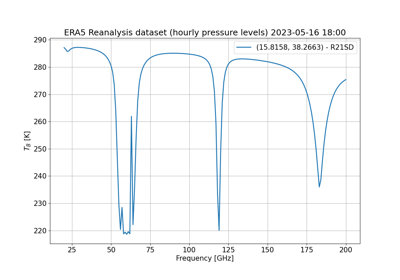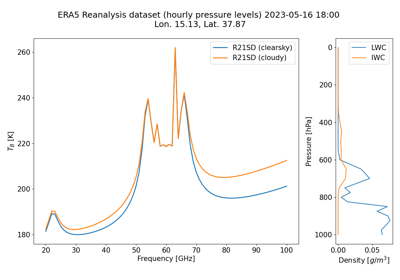pyrtlib.apiwebservices.ERA5Reanalysis.read_data#
- classmethod ERA5Reanalysis.read_data(file: str, lonlat: tuple) DataFrame#
Read data from the ERA5 Reanalysis dataset.
- Parameters:
- Returns:
Dataframe containing the variables retrieved.
- Return type:
Note
Variables name and units information are reported within the attribute units of the returned dataframe (see example below).
Example
>>> from pyrtlib.apiwebservices import ERA5Reanalysis >>> lonlat = (15.8158, 38.2663) >>> date = datetime(2020, 2, 22, 12) >>> nc_file = ERA5Reanalysis.request_data(tempfile.gettempdir(), date, lonlat) >>> df_era5 = ERA5Reanalysis.read_data(nc_file, lonlat) >>> df_era5.attrs['units'] {'p': 'hPa', 'z': 'km', 't': 'K', 'rh': '%', 'clwc': 'kg kg-1', 'ciwc': 'kg kg-1', 'crwc': 'kg kg-1', 'cswc': 'kg kg-1', 'o3': 'kg kg-1', 'q': 'kg kg-1'}
Note
To convert specific cloud water content (CLWC) or specific cloud ice water content (CIWC) from kg kg-1 to g m-3 using this function
pyrtlib.utils.kgkg_to_gm3()
Examples using pyrtlib.apiwebservices.ERA5Reanalysis.read_data#

Performing Upwelling Brightness Temperature calculation using ERA5 Reanalysis Observations.
Performing Upwelling Brightness Temperature calculation using ERA5 Reanalysis Observations.

Performing Upwelling Brightness Temperature calculation using ERA5 Reanalysis Observations in cloudy condition.
